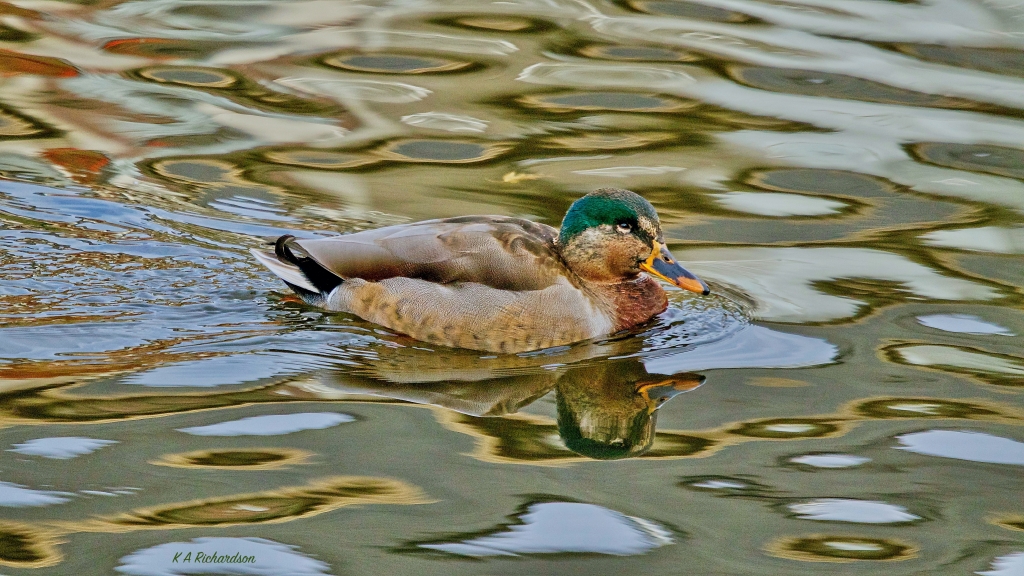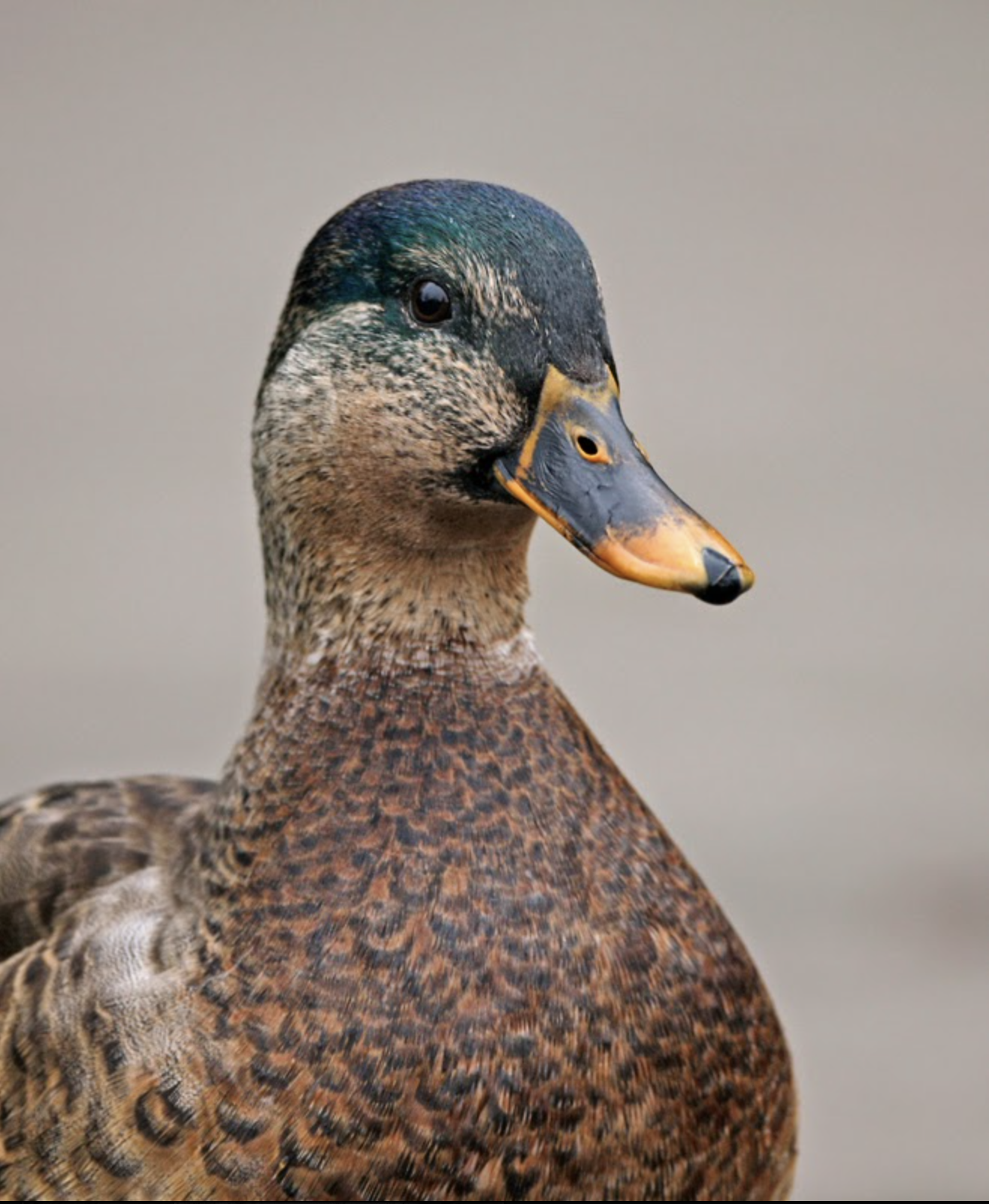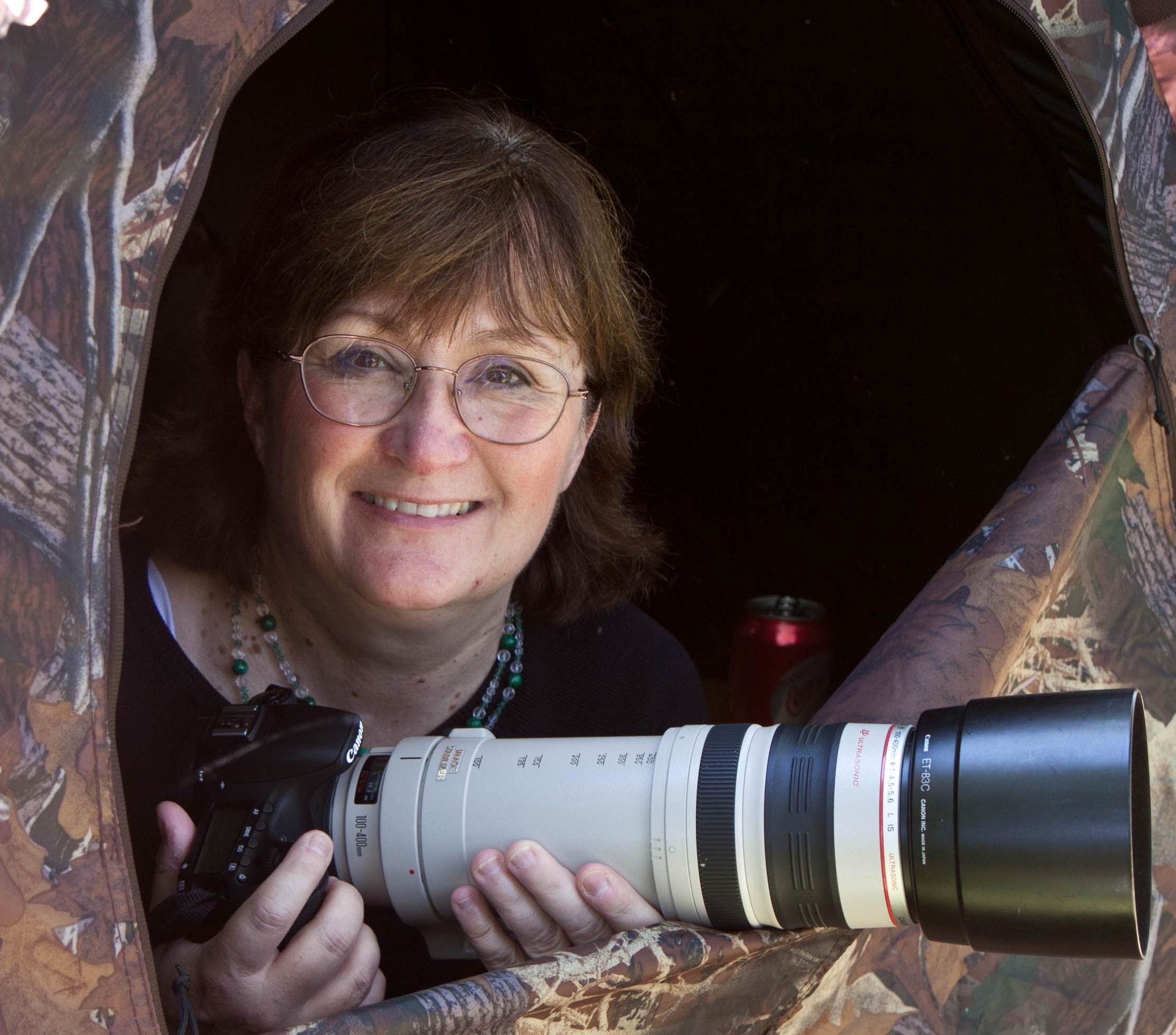An old dog learns something new…. Does the term “intersex duck” intrigue?
Please note: some of the photos are high resolution and take extra time to load on a slow computer.
ALSO: IF YOU’RE VIEWING THIS ON AN iPad,I recommend that you turn it sideways to landscape view then tap the AA at the top of the toolbar and choose Show Reader: I think you’ll enjoy the enhanced reading experience!
If you’re using a Mac from 2020 or newer, I also recommend that you click on the reader view icon on the left side of Safari’s address bar. I have no idea whether you can get enhanced reading from other systems on non-Apple devices….
Large Belmont Pond, March 23, 2020.

I noticed a strange looking duck, resembling a Mallard drake, sitting calmly on the south-end raft where various species, but mostly Mallards, preen and sun themselves from Spring through Autumn. As there were other Mallards in the pond, it was easy to compare/contrast. What I noticed first was this one’s “white eye,” or more accurately, its closed white lower eyelid.
The plumage wasn’t quite right, either, but that’s not unusual as we move from Spring through Summer. Of course, on this day, we were just at the official beginning of Spring! Remember, too, that this was the first Covid year….

Then I noticed the newcomer’s bill: orange with black streaks or spots, like a Mallard hen’s. The head was streaked only on the top side with the green that completely covers other Mallard drakes’ noggins. And the new duck’s sides resembled both a female’s and a male’s.
At the time, I was very puzzled by the combination of male and female physical characteristics. I had nothing in my lexicon to describe it. On my way home, I recalled having seen a reference somewhere to a “Brewer’s Duck” that Audubon had named sometime back in the 1800s that had eventually been shown to be a hybrid of a Mallard and a Gadwall. At home, I looked up BD on the Internet, and found this:

Then I did what no effective birder, student of Nature, or anybody, really, should do: I jumped to a conclusion without asking enough questions / doing sufficient research. The bird with the fake blind eye (I had already named it Homer, in honour of the blind Greek poet/historian) was, I surmised far too easily, a Brewer’s Duck — a Mallard-Gadwall hybrid! After all, I had seen Mallard hybrids before, particularly a Mallard-Northern Pintail cross that I’d observed in 2013 in White Rock (South Surrey), BC. And I’d learned at that time that Mallard hybrids are not rare, in fact not all that remarkable, really, except for their “enhanced appearance.”

Still, Brewer’s Ducks, my research showed, were certainly uncommon. I noticed that Homer didn’t fit perfectly the description of BD’s I was reading, but blithely chalked that up to the idiosyncrasies of hybridism. And then, as I am wont to do (!), I began “sharing the news” of my discovery — on Flickr, and with friends and acquaintances who live in the area and likely to see Homer themselves.
For that impulsive transgression, months later, I humbly apologize. In a moment, you’ll be picking up on the fact that from here on pretty much every use of the male pronoun appears in quotation marks. If you haven’t guessed already, soon you’ll understand why….
‘Homer’ hung around Belmont Pond for a week or so and, even with the sudden onset of Covid-19, friendly neighbours on the east side of the pond allowed me access to their back yard on the pond’s east side to photograph ‘him’ at closer range than in my first encounter.

“Mallard-Gadwall hybrid, aka Brewer’s Duck, named by Audubon in 1822.
A rare find and a welcome addition to the large Belmont Pond, Kelowna, BC. “
(‘Homer’ was the original spelling; the name has since been adjusted to reflect more recent ‘information.’ Read on!)
Then suddenly, as April arrived, ‘he’ was gone from Belmont Pond. Forever, I suspected; off with the other Mallards to Northern destinations for the breeding season.
I was very pleasantly surprised, therefore, when I “rediscovered Homer” in a channel of Thomson Marsh on April 4 and again on the grass near Teal Pond during the week of April 13.

The April photos included extreme closeups that have become very important parts of an historical record. By mid-April, “Homer” had “disappeared” once more. Forever, I thought, again(!).

Naturally, I celebrated the find, anyway, and persisted in trumpeting the re-arrival of the “Brewer’s Duck.”

By May, however, Homer was no longer to be seen, at least by me. Not until Autumn, October 29, 2020, when ‘he’ magically reappeared in Belmont Pond, then, as in the spring, in the Southeast Sector of Thomson Marsh, between Teal and Raptor Ponds.. Imagine my surprise!


Soon, others were noticing and photographing ‘him’, too. Still, no one I knew ever had a “better” identification of ‘him’ than mine. Then one day, on an umpteenth Flickr post, Paul Anthony Baker, a colleague from The West Coast, wonderful photographer and birder who went by the handle “ebirdman,” whom I’d known since 2013* , wrote a simple question/comment in a response:
“Lovely shot, Keith! Have you ever done any reading on intersex birds? This bird looks very much like an intersex Mallard. Take a look (at this link) and see what you think. https://www.inaturalist.org/projects/intersex-ducks”
And that kind prodding, as we say, changed everything!
*(Very sadly, Paul passed away in January 2021: https://www.flickr.com/photos/ebirdman/51842381242/in/dateposted/ For much of a year, we did not know what had happened, until his son chose to update his blog.)
Here’s what turned up, in part, on the site Paul referenced:
Note on iNaturalist website by Reuven Martin (project createdon January 26, 2018):
“Intersex” birds are those that show plumage and bare-parts colour seemingly intermediate between male and female. This is commonly seen in Mallards and is also known to occur in other ducks and perhaps other birds. Such birds are often confused with hybrids. As far as I know, the phenomenon is not well-understood or studied.
I use “intersex” in quotes because the term has quite a different meaning to how it’s used in humans.
Click this link to view an excellent collection of images of what I now call ‘iDucks‘:
https://birdhybrids.blogspot.com/2015/01/intersex-birds-and-their-confusion-with-hybrids.html
Reuven continued: This project is for any ducks thought to be or to possibly be “intersex”. I’d like to get a better handle on how their plumage can vary. Other interesting questions:
* Can these birds reproduce, and if so which sex are they?
(Generally thought to be female, but I’m not sure how well-supported that is).
* Is behaviour and voice typically more male-like or female-like?
* Does the plumage remain consistent over the birds life?
(The answer is at least sometimes yes.)
The screen shot below shows some of the locations of interest to Reuven on the iNaturalist blog….


As I probed for information on the Internet, I was overwhelmed by what I found. The earliest data I encountered came from a cooperative website, Bird Hybrids http://birdhybrids.blogspot.com (apparently coordinated by Dave Appleton from North Elmham, Norfolk, United Kingdom). It enabled me to find the site of another Flickr member in Sweden, Carl Gunnar Gustavsson, that is also devoted to hybrids and birds that might be mistaken for hybrids, such as the duck below that so resembles “Homer.” Mr. Gustavsson’s post is dated December 27, 2008! And these are his images:


Under his photos, he had written: _63I8334 Mallard Intersex 1
“Malmoe, Sweden 27 December 2008. This is the most masculine out of 2 or possibly 3 individuals at the same pond today. At two other ponds there were only normal birds. I saw this one also about 2 weeks ago when it was accompanied by a normal male and a normal female. Today it seemed to be accompanied by a female only when it at times separated from the flock. I presume that this is a pure mallard with poor sex definition alternatively a masculinised [sic] female. Arguments in favour of other origin?? I uploaded this picture because I think it might add something to the discussion if a bird is a hybrid or an abnormal individual of a pure species.“
While clearly NOT “Homer,” Carl Gunnar’s duck in Sweden 12 years ago certainly represented the same natural phenomenon I’ had’ been viewing in Kelowna, BC, Canada!
Besides his own photos I found a useful opinion Mr. Gustavsson had offered on on someone else’s work, as well, that sets out his criteria of judgment in the hybrid vs intersex argument (quote copied and edited to remove Internet links that no longer work):
“I [d]on’t think it is a hybrid at all but what we call an intersex, i.e. a pure Mallard with both male and female features. Odd but not too uncommon. This one is the most extreme that I have heard of [dead link removed]. It was ringed [banded?] as a typical female but 10 years later looked like a rather typical male except for the bill which is still of a female type (it is the bird in the front I am talking about!!!!!!!!!!!). Some other examples, mainly my own [dead links removed]…. As you can see there are different degrees of masculinity and I think yours is rather typical. Black on the bill like in a female, green on the head green from the eye and backwards/downwards reminding on an american wigeon [sic], a mixture of male and female feathers along the side of the body and more or less obvious male type “hooks” on the tail. Moulting [eclipse] male birds is the big pitfall but should not be a problem at this time of the year, [as they] do usually not have black on the bill or only a black mid rib on the culmen [upper ridge of a bird’s bill] and usually have a more mixed pattern of colour on the head — not the typical limited one that your bird has.” [bold face and square brackets – [ ] – are mine – KAR]
As I delved deeper into Dave Appleton’s Internet page on hybrids vs intersex ducks, I came across other opinions. One of the most interesting is authored by Laura Erickson, a birding expert and writer from Duluth, Minnesota. One of her first references to “intersex ducks” appeared on her Flickr site on February 3, 2009. [https://www.flickr.com/photos/lauraerickson/3251558114] where it attracted a comment from Joern Lehmhus. (He is still actively chasing this issue as shown by his comment on one of my Flickr posts in December 2020 pointing out that I had found an intersex duck, not a Mallard-Gadwall hybrid!)
In 2009, Mr. Lehmhus was questioning whether the duck Laura had labelled “intersex” was perhaps a Mallard-Black Duck hybrid. It was not as we learned from yet another post by Cathy Sheeter, another Flickr member who discussed the Mallard-Mexican Duck hybrid vs iDuck issue on Appleton’s Bird Hybrid’s site on April 1, 2013 (and no, I don’t think there’s an April Fools prank involved here!). https://birdhybrids.blogspot.com/2014/04/mallard-x-mexican-duck.html
Cathy’s duck, she concludes, is a hybrid, not an intersex. This discussion continues below the sidebar in red below.
SIDEBAR! This “hybrid/intersex/eclipse drake distinction” became important to me when I came across a second duck at Thomson Marsh on December 1, 2020, that was also difficult to identify, one I eventually named Socratease.

More on her (shown just above) later..
In her piece, Cathy Sheeter emphasizes the importance of the appearance of the bill. When I suggested that Socratease (above) is an intersex Mallard, my Flickr friend Jody Wells, on Vancouver Island, challenged me, claiming that it was just an eclipse drake, using the bill and other features to explain why he thought so. At first, I was inclined to agree. Over time, and having managed a couple of times to find Socratease again, I became more sure of my judgment. Jody was apparently unfamiliar with intersex ducks at that time, and is learning about this phenomenon along with me…. Eventually, I concluded that Socratease is also an iDuck!
Now back to C Sheeter’s case for why the duck in the photos below is NOT an intersex Mallard:
(Note: as I cannot copy the individual photos, I’ve had to use a screen shot from her site.)

I also want to return to Laura Erickson’s blog from Minnesota for a moment. Although she first discussed intersex Mallards on her February 2009 podcast, she returned to that story in her blog post of February 13, 2016 where the audio has been transcribed. I encourage anyone interested in this story to read it here: https://blog.lauraerickson.com/2016/02/intersex-mallard.html.
Part of what makes it interesting to me is her attempt to link aging to sexual characteristics, not just in Mallards, but in other birds, and even people.
To hear the original 2009 podcast click the link below then follow my instructions.
Her audio podcast is a bit hard to get to, but worth the effort:
https://www.lauraerickson.com/radio/?year=2009
Scroll down and click 2009 (on the list on the left), AND THEN in the next window, scroll down again to the February 4th entry – “Intersex Mallard” and click the audio link THERE to hear her short and fascinating podcast:


PLEASE NOTE: as time/opportunity permit and more information and thoughts develop,
I am continuing to update this post and add others related to it!

This map is included to show the distance between Belmont Ponds / Thomson Marsh and Munson Pond and Park.
UPDATE: In January 2021, at Munson Park, as the ducks fly, about 3.6 km north of where Homher resides, I found a third iDuck. To keep things simple, I named her Muncie. She was hanging out with a pair of mooching Mallards near a well-known bird feeding station catering to passerines. The ducks help clean up the spillage. The drake of the pair was somewhat mean towards Muncie, but she handled his harassment cleverly and found efficient, somewhat sneaky routes back to the treats. I observed her several times through the remaining winter of 2021. At one point, she had met a single Mallard drake whom she was dominating!
Here is a little gallery tribute (Click on a photo to enlarge it and enter the gallery; to close it, click the x in its top right corner.)
In the fall of 2021 she appeared again and is still to be found in the same location in February 2022 and in Spring 2023:







For the full record of Homher, the gorgeous iDuck star of Thomson Marsh (below), take a quack at my growing Flickr album of Homher here:
www.flickr.com/photos/8666250@N02/albums/72157713743926477
Here’s one of our “venerable lady” in February 3, 2021, and below that three and a half months later, and below that a link to a new post following her through to a full year after that — February 2022.

Update November 4, 2021
Homher disappeared again in April but reappeared on May 18, 2021 at Belmont Pond (where I had first seen her over a year earlier and where she had been seen by another Kelowna photographer, Roberta Snow, as far back as June 2019).

For more on Homher, starting with her reappearance at Teal Pond, Thomson Marsh, see this update post: https://birdsandmusings.wordpress.com/2021/11/05/homher-the-iduck-reappears/
Additional links:
British writer Charlie Moores visiting Vancouver, BC in 2009:
https://www.siung.net/bird/tmp2/bird/intersex-mallard-vancouver.htm
Dallas-Fort Worth, Texas link from 2014:
https://dfwurbanwildlife.com/2014/04/11/chris-jacksons-dfw-urban-wildlife/mallard-intersex/
Wow, Keith!
KUDO to you for your “Dogged Determination” on following through on this bird [and topic ]
I had wondered about this duck when you first posted on Flickr…but with hybrids you can never discount back – crosses and unusual mixing of genes.
Size referencing , amongst mallards is problematic as well with the possibility of domestic”bantam” (smaller) genes blurring the structural differences in wild stock between larger drakes and smaller hens.
As with many things in our observations, often our discoveries lead to as many questions as answers.
Well Done!!
LikeLike
Thanks, Jody. I appreciate your observations, and feedback very much!
LikeLike